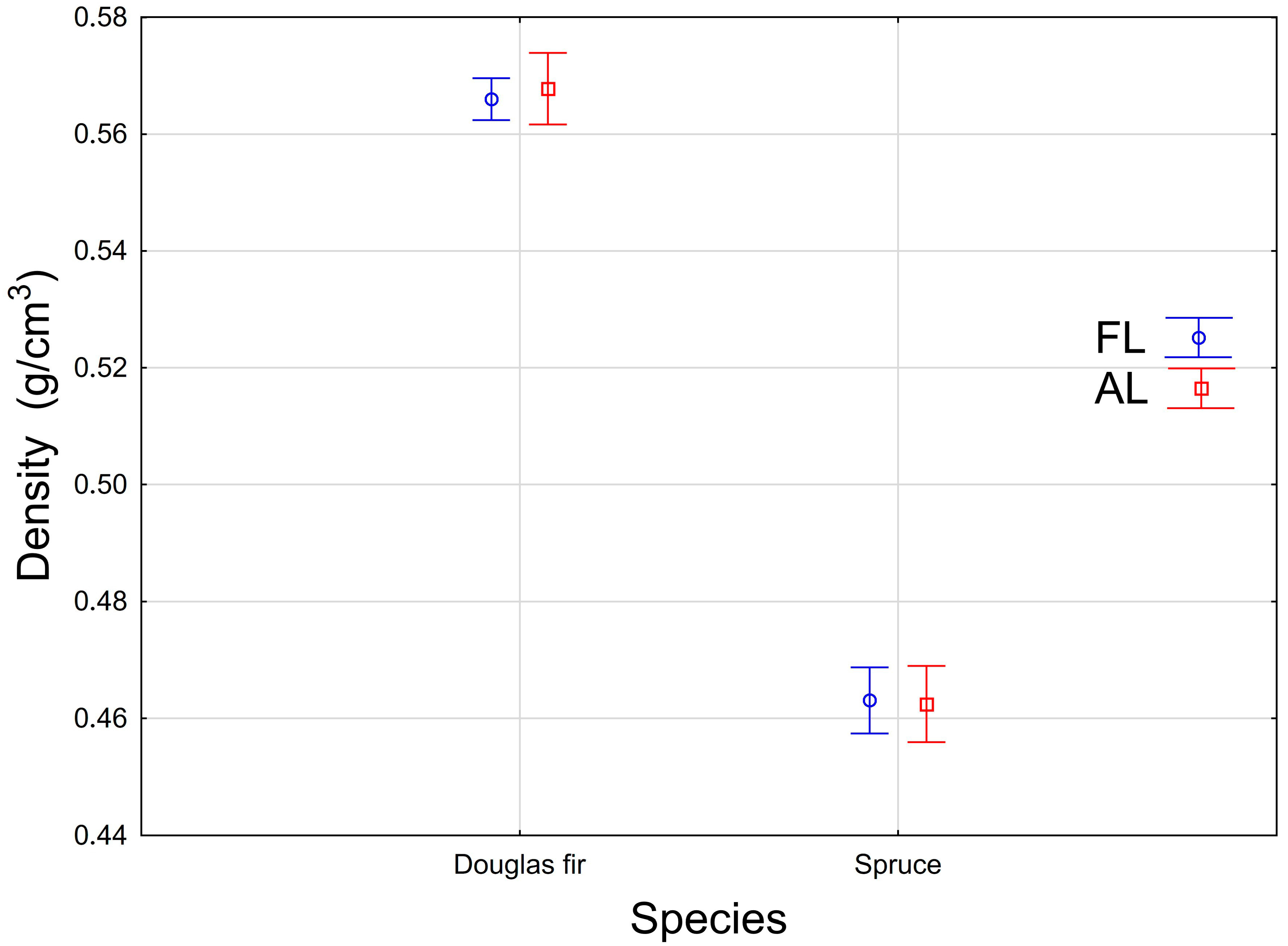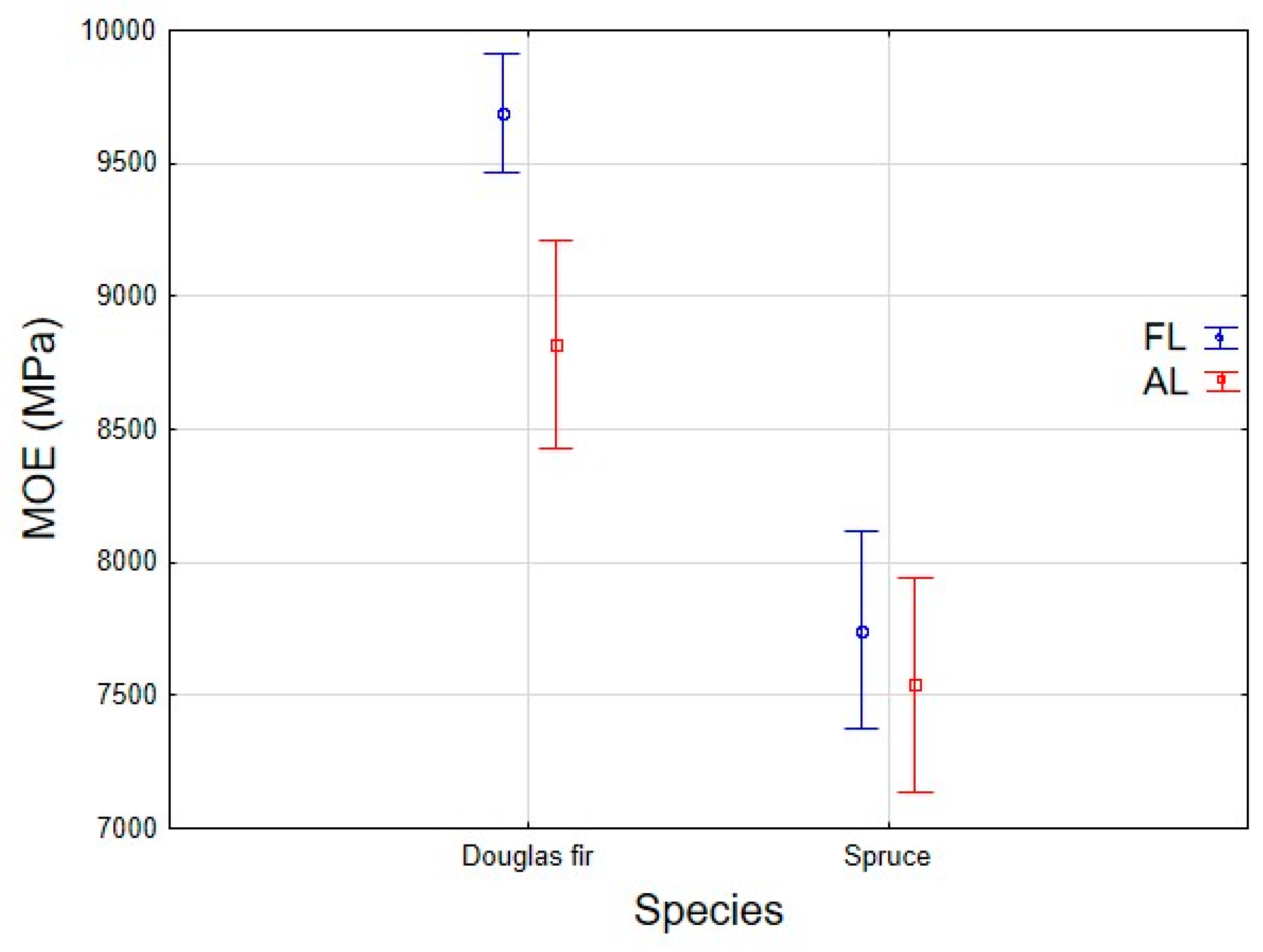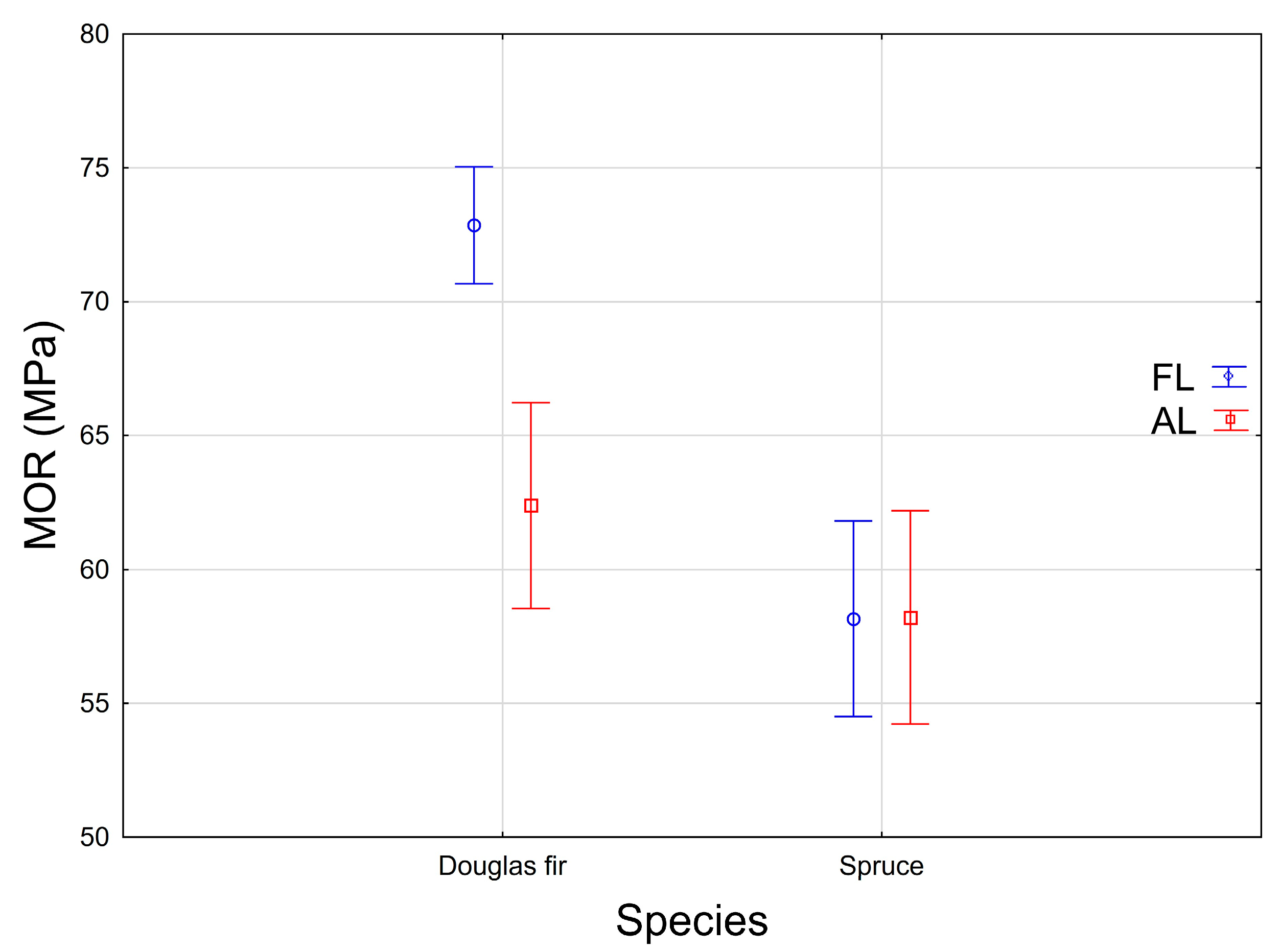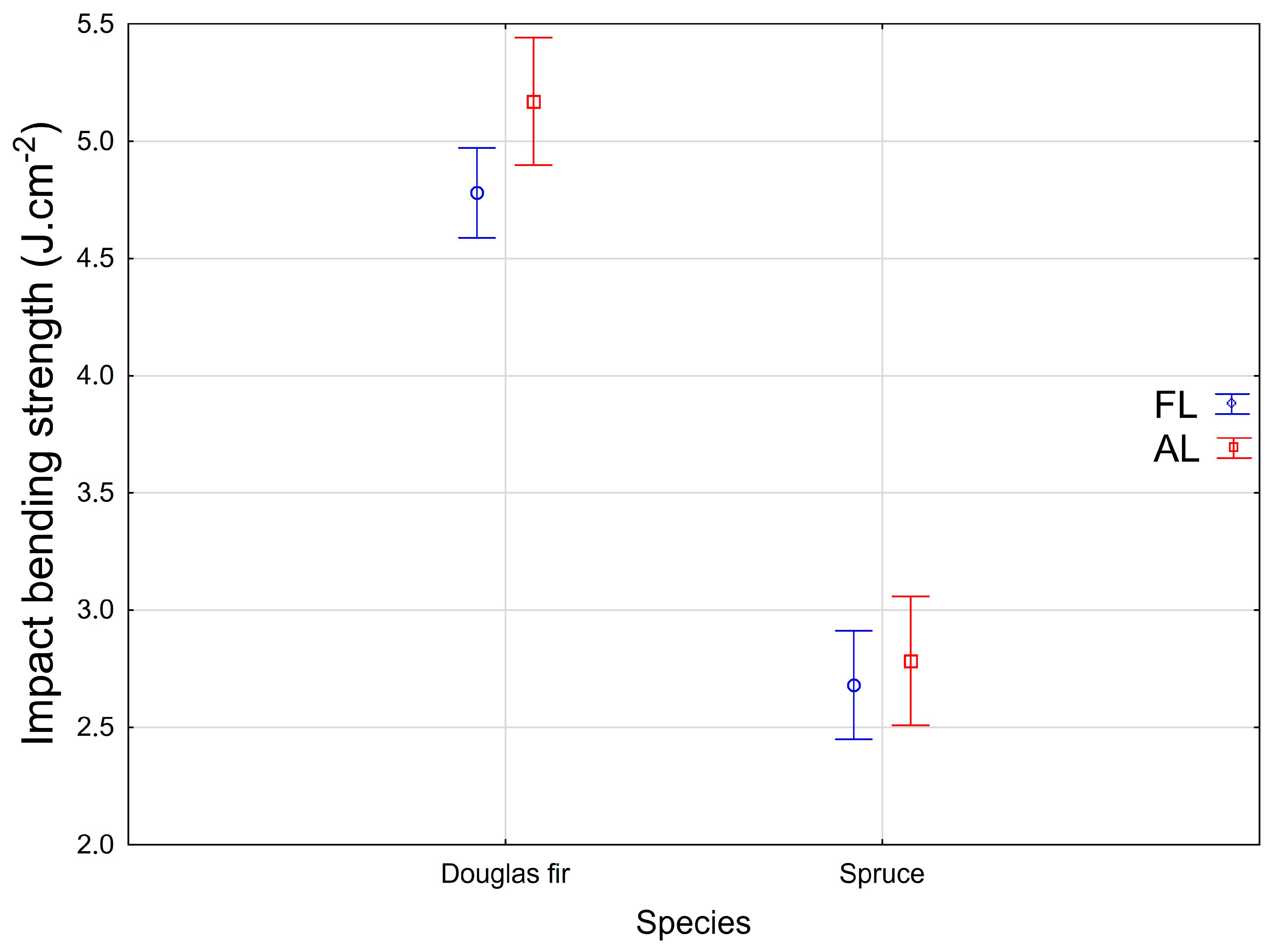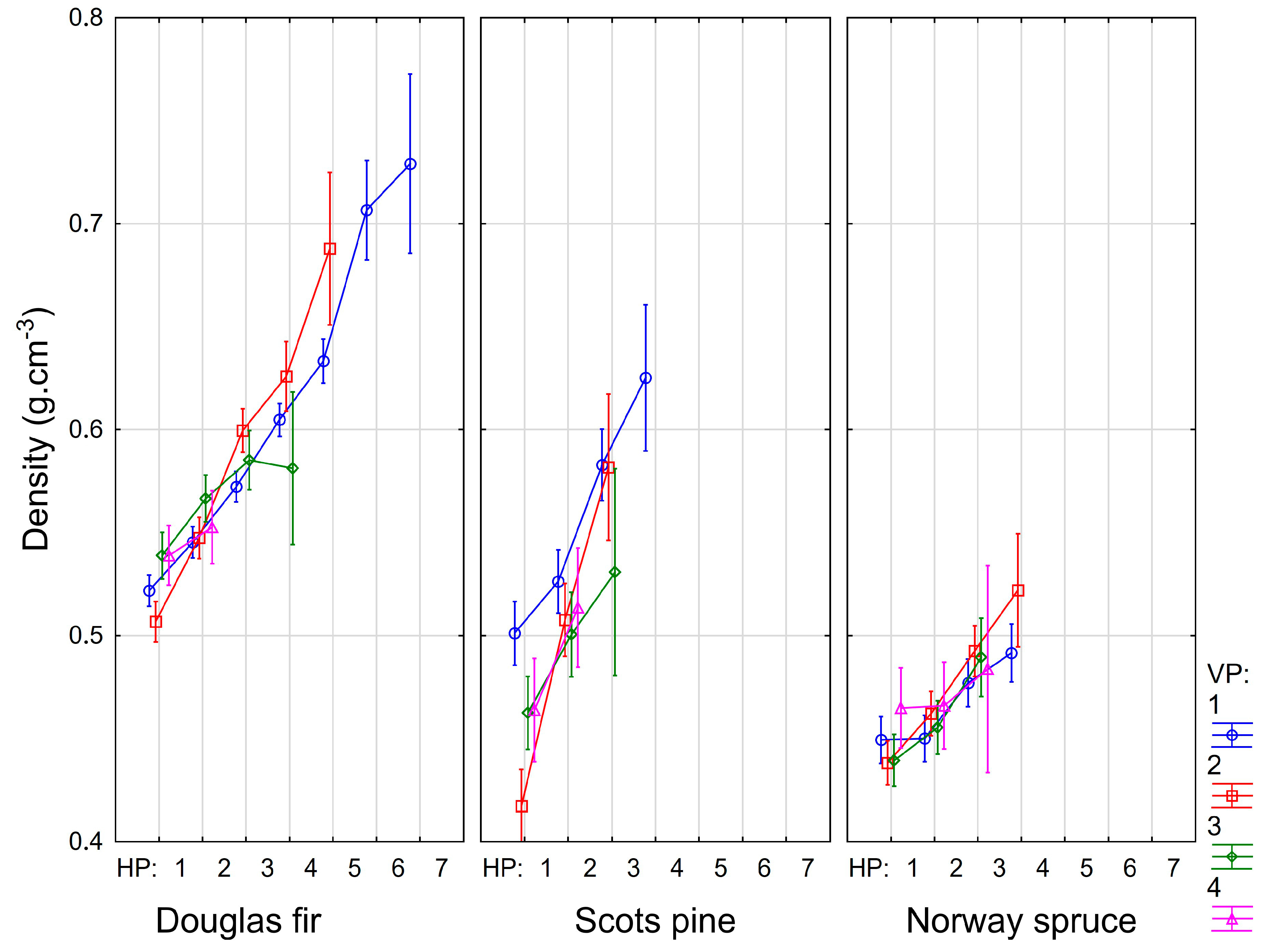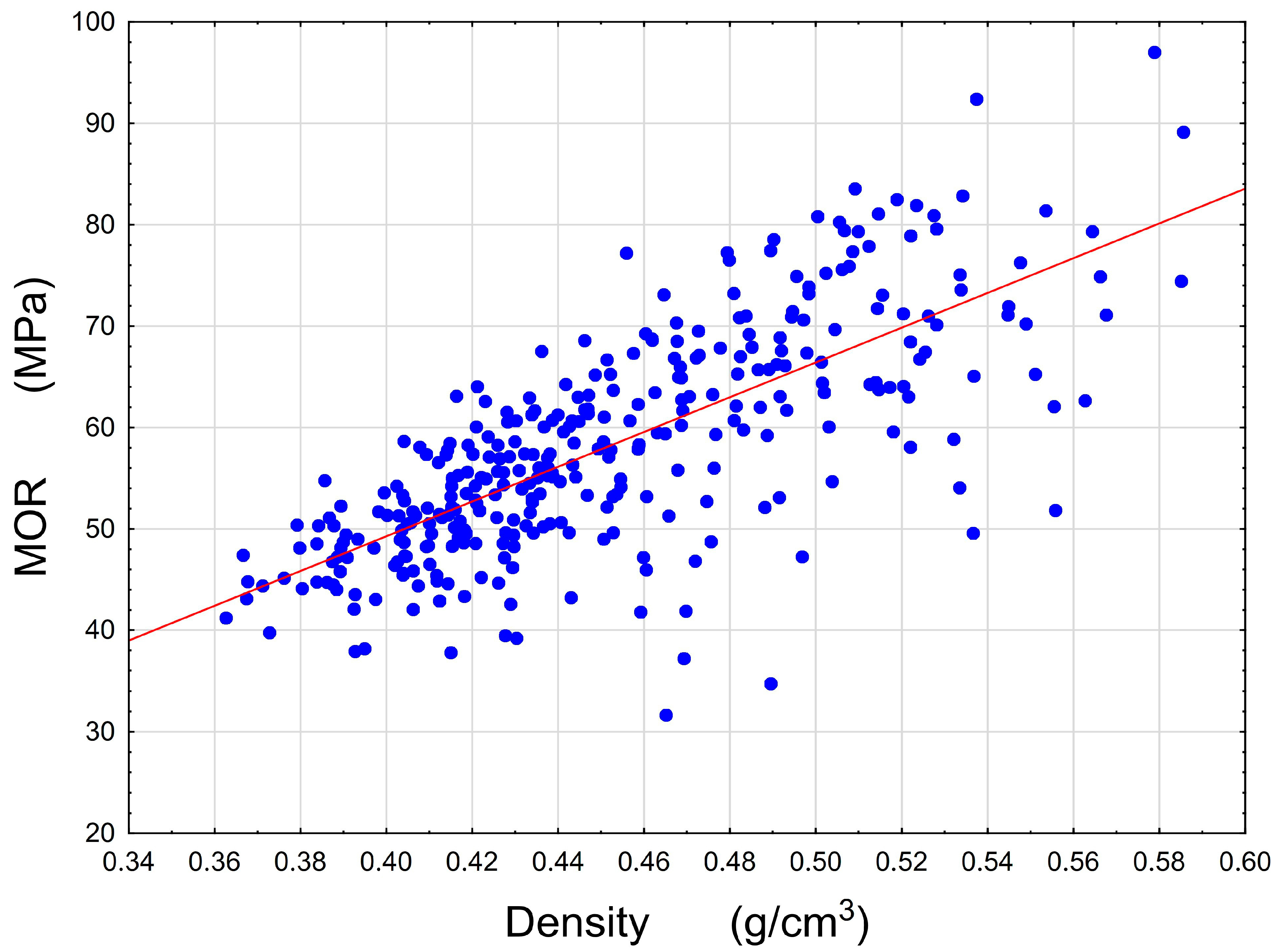2.1. Materials
For the purpose of this study, 2 different sites in the Central Bohemia area (Czech Republic) were selected. The first site, Krymlov (49.9460656 N, 14.9257086 E), represents forested agricultural land (AL). The growth is a mixture of spruce, Scots pine, white birch and Douglas fir at a site characterized by an altitude of 430 m above sea level, an annual average temperature of 7.5 °C and 600 mm of annual precipitation. The soil type is characterized as Gleyed Luvisol to Luvic Gley. Under these conditions, the tree species reached a standing volume in the following order: pine, spruce, birch and Douglas fir 352, 349, 157 and 438 m
3·ha
−1, and Douglas fir thus clearly represented the most productive tree species from all tested species [
24].
The second study plot, Amerika (50.0072625 N, 14.8537100 E), represents reference growth on permanent forest land (FL), i.e., the forest continuity has never been interrupted at the site. This is a stand with Norway spruce and Douglas fir. The site is relatively acidic, characterized by an altitude 420 m above sea level, a mean annual temperature of 8.5 °C and precipitation of 550–650 mm per year. The soil is a Luvisol. The standing volume was 507 m
3·ha
−1 for spruce and 579 m
3·ha
−1 for Douglas fir [
15]. The age of all felled trees at both sites was around 60 years.
A total of four sample trees of Douglas fir, four samples trees of spruce and four samples trees of pine trees were taken. An equivalent number of Douglas fir and spruce samples were taken on the former afforested agricultural land for comparison with the neighbouring reference forest land. Unfortunately, it was not possible to find forest soil in the adjoining afforested agricultural land with a mixture of Douglas fir-spruce-pine; however, we considered it a shame not to take advantage of the possibility of assessing the quality of the pine wood from the agricultural land, and it was at least partially included in the evaluation.
The basic forest characteristics of the specimens, i.e., the range of heights and enumeration diameter according to tree species and site, are shown in
Table 1.
2.2. Methods
Sections (120 cm in length) were taken from each sample tree, representing the basal part of the stem and 20%, 40% and 60% of the tree height, marked as vertical positions (VP) 1, 2, 3 and 4 in respective order. The sections were cut using a band saw in order to obtain the central plank. The central plank was then the starting material for the production of test specimens for the appropriate tests and assessments of the influence of the horizontal position (HP), where position 1 denotes the part closest to the centre of the stem, whilst the position with the highest number indicates the part near the bark. The length of the test specimens differed depending on the test, but the cross-section area of 20 × 20 mm (radial × tangential) was the same for all tests.
For the purpose of evaluating the investigated tree species and the impact of site, we tested the following physical and mechanical wood properties. For physical properties, wood density was evaluated on specimens at 12% moisture content after conditioning at 20 °C and 65% relative humidity, and a total of 3695 specimens measuring 20 × 20 × 30 mm were used to determine the density according to the Czech national standard [
25]. Density (in g·cm
−3) was calculated according to the following formula:
where
ρ12 is the density at a wood moisture content of 12%,
m12 is the mass of the test samples (g) at a wood moisture of 12%, and
a12,
b12, and
l12 are the dimensions of the test samples (cm) at a wood moisture of 12%.
For mechanical properties, modulus of elasticity in bending (MOE), modulus of rupture (MOR) and impact bending strength were evaluated. The tests for mechanical properties were evaluated on specimens at 12% of moisture content after conditioning at 20 °C and 65% relative humidity according to the Czech national standard [
26]. Specimens measuring 20 × 20 × 300 mm were used for all of the specified tests.
MOE was determined and evaluated according to the Czech national standard [
27]. A total of 1139 specimens were used. MOE (in MPa) was calculated according to the following formula:
where Δ
F is the difference between the forces at maximum and minimum load limits (N),
l0 is the distance between the supports (mm),
b and
h are the width and height (mm), respectively, of the test samples, and Δ
y is the test sample deflection (mm) in the area of pure bending, equal to the difference between the bending values corresponding to maximum and minimum load limits.
MOR was determined and evaluated according to the Czech national standard [
28]. A total of 1139 specimens were used. MOR (in MPa) was calculated according to the following formula:
where
Fmax is the maximum load (N),
l0 is the distance between the two supports (mm), and
b and
h are the respective width and height (mm) of the test samples.
Impact bending strength was determined and evaluated according to the Czech national standard [
29]. A total of 2005 specimens were used, and impact bending strength (in J∙cm
−2) was calculated according to the following formula:
where
W is the power consumed for the wood rupture (J), and
b and
h are the test sample dimensions (cm) in the radial and tangential directions respectively.
Statistically significant differences in the assessed wood properties between tree species within one site, and differences between the same tree species depending on the site, or the influence of other factors such as vertical position and horizontal position in the stem, were assessed using ANOVA and subsequently, Tukey’s multiple-range test. A significance level α = 0.05 was used as the default value. A linear regression model was used to assess the effect of density on the strength characteristics.
Due to the fact that pine was only represented on agricultural land and was missing from the reference site, the values obtained were those used only for comparison with other tree species within sites and for comparison with literature. Pine was not used to evaluate the impact of sites.
